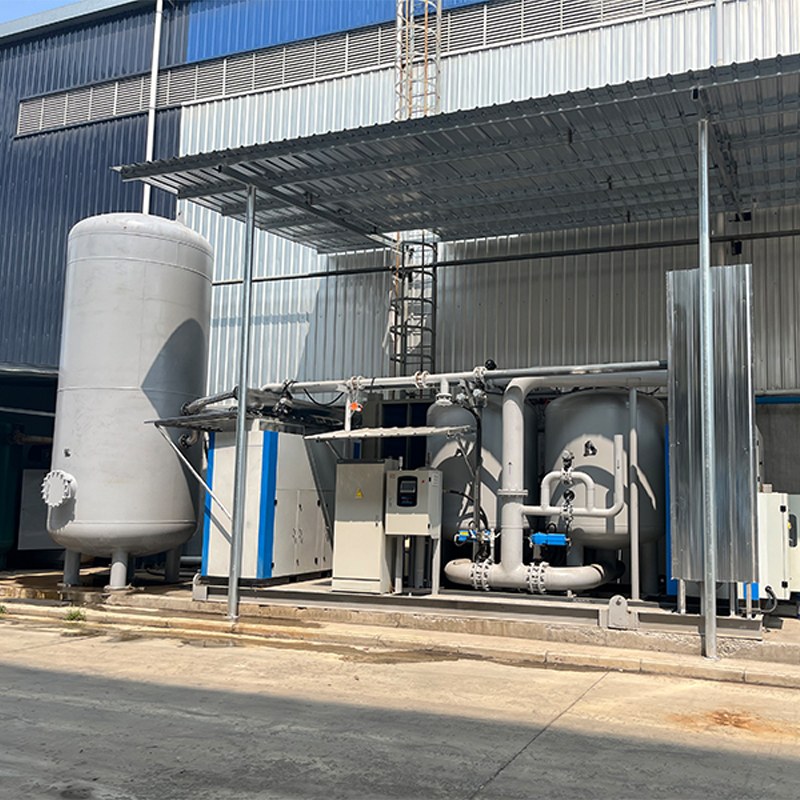-
WhatsApp / Mob : +86 156 5177 2521
-
البريد الإلكتروني : mrwin@cnbangwin.com
WhatsApp / Mob : +86 156 5177 2521
البريد الإلكتروني : mrwin@cnbangwin.com
VPSA Oxygen Plant for Aquaculture: Boost Growth & Efficiency
Sep 19 , 2025
1. Introduction
2. Why Aquaculture Needs On-Site Oxygen
3. What is a [VPSA Oxygen Plant]
4. Product Description & Working Principle
5. Key Features for Aquaculture
6. Technical Details
7. Innovative Advantages
8. Environmental & Economic Benefits
9. Real-World Case Study
10. Applications
11. FAQs
A [VPSA oxygen plant] is an on-site solution for aquaculture farms that need a controlled dissolved oxygen concentration in the water for healthy fish and shrimp growth. Vacuum Pressure Swing Adsorption (VPSA) systems produce oxygen continuously at 90–95% purity. This is a very economical and reliable way to oxygenate the water and get better quality fish, leading to a higher profit for aquaculture operations.
Fish and shrimp don’t do well in water if the dissolved oxygen level drops below 5 mg/L for an extended period. Mechanical aerators only increase oxygen level during a fraction of the day (cold weather, low biomass) and often fall short in emergencies or during warmer months. A stable and reliable on-site [oxygen generator] system is the only way to ensure continuous access to oxygen (O2) on a farm, even during a crisis.
[VPSA oxygen plant] is a technology that produces oxygen through Vacuum Pressure Swing Adsorption. It can produce oxygen continuously and delivers 90–95% pure oxygen (or more) directly to a fish farm’s water.
A [VPSA oxygen generator] system has twin adsorption columns, blowers, a vacuum pump, and PLC based control system. Ambient air is fed to two large molecular sieve columns. Nitrogen (N2) gets adsorbed on the sieve while the desorbed gas stream is high purity oxygen. It is compressed and sent directly to the fish ponds for injection.
* Purity: 90–95%
* Flow rate: 5–500 Nm³/h
* Low energy consumption with smart load adjust mode
* Modular skid-mounted design for easy setup near ponds
* Operating Pressure: 0.1–0.5 MPa
* Power Requirement: 3–50 kW (based on capacity)
* Control: Touchscreen PLC based with remote IoT monitoring
* IoT Monitoring: Real-time feedback on water’s dissolved oxygen level to easily integrate with automatic plant operation.
* AI-Based Oxygen Control: Machine learning algorithm that dynamically tunes plant output depending on biomass density, water temperature, etc.
* Hybrid Integration: Integrates natively with [recirculating aquaculture system (RAS)] for next-generation closed-loop aquaculture farms.
* Significantly reduces fish mortality, improves feed conversion ratio (FCR).
* Reduce operation costs by up to 30% over delivery of liquid oxygen in cylinders.
* Helps fish farmers follow more sustainable practices by reducing the need for chemicals.
A shrimp farming operation in Peru incorporated a 100 Nm³/h [VPSA oxygen generator] into their water management process. They saw a 20% improvement in growth rate and a 25% reduction in mortality due to disease in as little as 6 months.
* Intensive fish farming (salmon, tilapia, catfish)
* [Shrimp hatchery] and nursery systems
* [RAS aquaculture] facilities
* Emergency oxygenation during algal blooms
A: Periodic sieve replacement is the only regular maintenance task. Basic service of the blowers is recommended after 3–5 years.
A: Yes, the plant is built for 24/7 continuous aquaculture operation and comes with automatic control.
